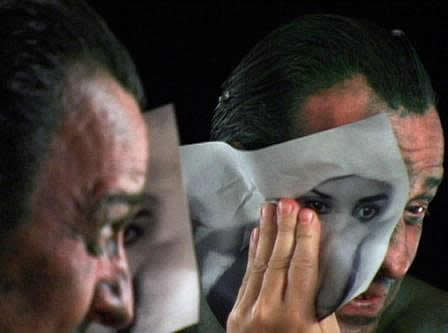Wifredo Lam Contemporary Art Center ,
Jun 10, 2011 - Jul 22, 2011
La Habana Vieja, Cuba
Memory of the Other
by Magaly Espinosa
Notes on an Exhibition "…how do we know the things that exist and to what extent are "the things that exist" established by the person who knows them?"
- Edward W. Said There are a great many things indebted to memory: oral and written testimonials, values, traditions, habits, customs and beliefs; with personal aspirations, the events in our lives, and particularly with remembrance, which generally is never accurate, since it is more in line with what we want to remember than what really took place. Memory is a reflection of the passing of time, which can be as flighty and unsure as the passions. It tussles with rumor, lives in interstices, in unfinished, allusive phrases, and ends up dominated by the intimate stories of those who in the past were appreciated by the community, because only their longevity made them live on beyond the present. This topic is a first-rate source of inspiration for artists in their capacity as auto-ethnographers or autobiographers, since everything that deals with personal experiences or with ethnography is borne by the imperceptible thread of memory. Moving beyond modern paradigms to understand the forming of new, deterritorialized and pluralistic models has made art theory and criticism view the contents of memory using a different blueprint based on more flexible, dynamic approaches. In this endeavor, one must bear in mind the conditions under which memory survives, which arise from the encounter of the local with the global, the flows and inconsistencies of contemporary society; the new ways in which social life is reorganizing into despacialized constructs, in which plural cultural formations featuring new social players are taking shape, as Arjun Appadurai reminds us. The art critic and historian Anna María Guasch has put together a traveling exhibition, La memoria del otro en la era de lo global (The Memory of the Other in the Global Era) , featuring the work of Ignasi Aballí, Dennis Adams, Ursula Biemann, Hanna Collins, Jordi Colomer, Rogelio López Cuenca, Francesco Jodice, Antoni Muntadas, Krzysztof Wodiczko and Ingrid Wildi, whose presence differs on each occasion in keeping with the conditions available in exhibition spaces. The show started at the Art Museum of Bogotá’s National University in 2009, then traveled to the Museum of Fine Arts in Santiago, Chile the following year, and to the Wifredo Lam Center in Havana in June 2011. The choice of artists from different cultural backgrounds has let the curatorship assemble a set of works dealing with some of contemporary society’s most pressing problems, stemming from the traumas caused by social inequalities and conflicts of all kinds. Curating a show on the subject of memory is a very challenging task, given the wealth of its content and the problems involved in placing it within the complex coordinates that are currently reorienting art and representation politics. These factors are making curatorial perspectives more flexible, in line with the post-autonomous condition of art, the disputes between the global and the local, the repolitization of art, collective memories and new theories around identity. One of the most significant aspects of what Anna María calls a "proposition-exhibition" lies in the fact that the latter is not limited neither to the politicsof nationalities nor to ethnic identities, but reaches beyond them, extending tothe global conflicts that cut across life like the anonymous wanderers in Francesco Jodice’s work, a metaphor for the many global movements that condition our lives every day, coupled with Krzysztof Wodiczko’s wall projections that bring painful memories to life, ghosts embodied on spaces on which memory becomes a reality. In that sense, the curatorship did not just let itself be seduced by the personal narratives that influence subject-matter: on the contrary, the pieces chosen are a metaphor of memory, bringing into view the cross-cultural or multicultural referential forms that cover it in order to make what the curator calls memory constellations. The pieces show the present from a perspective that focuses on the emerging circumstances that condition existence and the possibilities of grasping meaning that are always jealously guarded in the fathomless space that is memory. The chosen medium was video, a genre that makes it easier to gain an expanded sense of art that is evident as much in the self-reflection of art discourse as in practices that form part of the social fabric.
|





